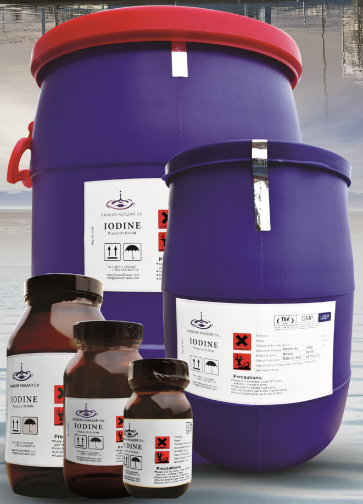Iodine introduction
The word “Iodine” which was discovered by the French chemist Bernard Courtois in 1811, is derived from the Greek word “Iodes” meaning violet or purple. It is a chemical element with symbol " I " and the atomic number 53.
Iodine is first isolated from dried algae. This element is also derived from deep-sea salmon.
The iodine production of the KKC is classified according to its apparent characteristics and production method according to the requirements of USP as follows:
- iodine derived from melting, grinding and roasting; In packings of 25 & 50 kg with irregular shaped beads and size 5 > mm
- Iodine from sublimation and cooling (condensation) with natural crystals; Packed in 25 & 40kg and size 2 > mm
|
Row |
Kind of product |
packing |
Particle size |
purity |
Remaining Ash Non-Volatile |
Chloride & bromide Percentage (In ACL) |
|
1 |
Iodine from the melting and grinding process |
25 kg 50 kg |
5 mm> |
99.8%< |
0.05%> |
0.028%> |
|
2 |
Iodine from sublimation and condensation |
25 kg 40 kg |
2 mm> |
99.8%< |
0.01%> |
0.028%> |

Applications of iodine:
Generally, iodine is used in the pharmaceutical industry, disinfectants, in the manufacture of LEDs and LCDs, contrast media, food stabilizers, nylon, high-purity metals, iodized fertilizers, electronics and iodized compounds.

